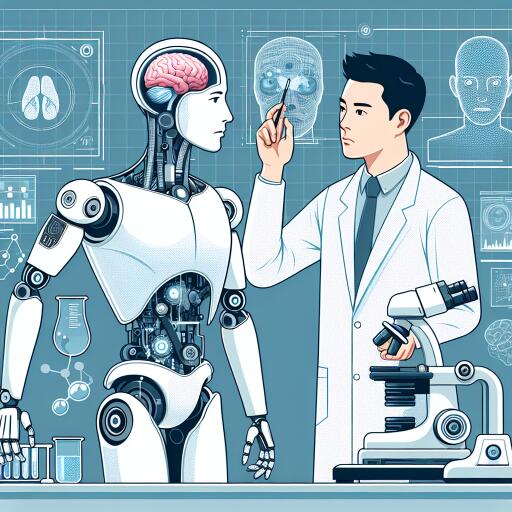Exploring the Frontier: Chinese Scientists Develop Robot Powered by Human Brain Cells
In an audacious leap towards blurring the lines between biology and technology, a team of Chinese scientists has unveiled a revolutionary creation: a robot that operates under the power of a human brain—or more precisely, a brain organoid resembling a miniature version of our cerebral tissue. This groundbreaking achievement opens up possibilities that once belonged squarely in the realm of science fiction.
The pioneering project, brought to life by researchers from Tianjin University, employs a “brain on a chip” model. A blend of biological cells and computing technology, this model functions through a sophisticated assembly: a lab-grown brain organoid linked seamlessly with a computer chip, enabling the robot to perform tasks such as moving, securing objects, and navigating around barriers. This integration is facilitated by sensors and an artificial intelligence algorithm, simulating a human-like intelligence within a mechanical host.
At the heart of this technological marvel is the use of stem cells— the versatile cells capable of birthing brain tissue. The organoid crafted from these cells exhibits traits of cognition, showcasing the ability to control the robot’s limbs independently. The implications of such a development are profound, hinting at future advancements in treating cerebral cortex injuries and tackling various neurological disorders.
The technique draws upon brain-computer interfaces (BCI), a concept also central to Elon Musk’s Neuralink project, which marries human neural activity with computational prowess. Unlike Musk’s project, which relies on a surgically implanted chip that communicates via Bluetooth, the specifics of the Tianjin University team’s method for signal transmission remain under wraps. Despite the mystique, the promise is undeniable, leveraging the potential of low-intensity ultrasound to foster connections between the organoid and its mechanical counterpart, thereby imbuing the robot with the ability to move of its own accord.
However, this scientific venture is not without its challenges. The researchers candidly addressed hurdles such as the brain organoid’s developmental maturity and the struggle to maintain a sufficient nutrient supply—crucial components including antioxidants, fibers, and minerals. Notwithstanding these obstacles, the team has achieved a functional synergy between the organoid and the robot through innovative treatments and the regenerative properties of low-intensity ultrasound, prompting the formation of neurons pivotal for autonomous movement.
Yet, the robot designed by these scientists exists in a world devoid of visual stimuli, operating solely on the electrical and sensory cues transmitted by its human-derived neurons. This presents an austere contrast to the sensory overload experienced by human beings, encapsulating the vast divide that remains between living organisms and their mechanical imitations.
While we stand on the precipice of monumental scientific advancements, the road ahead is fraught with ethical questions and technical ambiguities. The capabilities for organoids to repair or entirely reconstruct human brain tissue are still cloaked in uncertainty. As this research continues to evolve, it brings us face to face with the fundamental question of what it means to be alive, forcing us to reconsider the essence of intelligence, consciousness, and the boundary between the organic and the artificial.
In the domain of scientific inquiry, the creation of a robot powered by human brain cells signifies a thrilling convergence of biology and technology. As we look forward to the next chapters of this fascinating journey, one thing is clear: the future, with all its complex ethical, philosophical, and technological implications, is closer than we might think.










